Does Insulation Work in Summer?
Insulation is often considered a way to keep your home warm in the winter. This is, of course, true – but what often gets forgotten is that it can also benefit you in the summer. But how does insulation work in the summer? We’ll explore the theories behind the concept.
How does insulation work?
Insulation slows the movement of heat between two materials. It primarily does this by trapping air within its structure—whether through dead air spaces or within the cells of the material itself. Air is a poor conductor of heat, so these trapped air pockets significantly reduce the rate at which heat can pass through the insulation.
For example, in an insulated wall, the material acts as a barrier that slows the transfer of heat from the warmer to the cooler side. On a cold day, this prevents indoor heat from escaping to the outside, helping to keep your home warm and reducing the need for additional heating. Conversely, on a hot day, insulation helps keep the cool air inside and blocks outdoor heat, making it easier to maintain a comfortable indoor temperature. However, insulation is only as effective as its installation, and one challenge in insulation is thermal bridging.
Thermal bridging
Thermal bridging occurs when a material with higher thermal conductivity (such as metal or wood) allows heat to bypass the insulation, creating a “bridge” for heat to transfer more easily from one side of a building element. This can significantly reduce the effectiveness of insulation, leading to increased heat loss or gain, depending on the season.
- Common Locations: Thermal bridges occur at structural elements such as wall studs, floor joists, window frames, and roof rafters. These elements often have lower insulation values compared to the surrounding materials.
- Impact on Energy Efficiency: Even if a wall has high-quality insulation, thermal bridges can create weak points that allow heat to escape or enter, undermining the building’s overall energy efficiency. This can lead to cold spots on walls, floors, ceilings and higher energy bills.
- Preventing Thermal Bridging: To minimise thermal bridging, builders and designers can use continuous insulation materials that cover structural elements, use advanced framing techniques that reduce the number of thermal bridges, or employ materials with lower thermal conductivity. For example, insulated cladding or external insulation systems can ‘wrap’ the building and reduce the impact of thermal bridging.
How does insulation work in the summer?
Our external wall insulation helps stop the passage of heat by trapping air bubbles within the insulating material. This means it’s easier to maintain a comfortable temperature in your home. A good demonstration of this is loft insulation. If your loft is insulated at the joist level, you will probably have noticed that it gets very cold up there in the winter. This is because the insulation is stopping your home’s heating from escaping into the loft, where it would be wasted. On the other hand, if you go up there in the summer, you’ll notice it’s hot in the loft space because hot air is coming through the roof but not getting into the main body of your home.
Although any type of insulation helps reduce air transfer, external wall insulation is the best. It stops up to 40% of heat transfer through walls – which can make a big difference. Our expanded polystyrene (EPS) boards for external insulation are made up of 98% air. This is good news because air is the best insulator when trapped and unable to move around. It creates a very difficult barrier for hot or cold air to get through.
On hot days, insulation prevents your home from overheating. The thermal mass of your walls is heated by sunlight, and the heat doesn’t pass through to the inside of your home. If you have an air conditioning system, adding a layer of external wall insulation can make it more effective. If you don’t, you can still reach a comfortable temperature by opening the windows to let in cool air at night and closing them during the day. External wall insulation will help keep this cool air inside.
The main concept behind insulation working in the summer is solar gain.
Solar gain
Solar gain refers to the increase in temperature in a space, object, or building due to solar radiation. This can be either beneficial or detrimental, depending on the climate and the time of year.
- Passive Solar Design: In colder climates, buildings are often designed to maximise solar gain, especially during the winter. This might involve large south-facing windows (in the Northern Hemisphere) that allow sunlight to enter and warm the interior spaces.
- Summer Cooling: In warmer climates or during summer, excessive solar gain can lead to overheating. Shading devices like overhangs, blinds, or reflective coatings on windows are used to prevent this.
In a well-insulated building, the effects of solar gain are more pronounced. The heat gained from the sun is retained more effectively. This can reduce heating costs in winter but may require careful management to avoid overheating in summer. The design of a building must consider the seasonal variations in solar gain. For example, using high-performance glazing that allows maximum solar gain in winter but minimises it in summer, combined with good insulation, can optimise energy efficiency. Proper ventilation is also crucial to managing solar gain and insulation. It allows excess heat to escape in the summer and helps distribute solar warmth in the winter.
Optimising solar gain
- Dynamic Shading: Adjustable shading devices can help control solar gain throughout the day and year.
- Thermal Mass: Materials like concrete or stone, which absorb and slowly release heat, can moderate indoor temperatures by storing heat during sunny periods and releasing it when the sun is not shining.
- Insulated Glazing: Double or triple glazing with low-emissivity (Low-E) coatings can reduce unwanted heat loss while allowing beneficial solar gain.
Why install external wall insulation?
External wall insulation has other benefits. Primarily, it reduces the need for air conditioning in the summer. In turn, this saves money on heating bills in the winter and makes you feel more comfortable all year round. It also helps you reduce your carbon footprint because you’ll need less heating, reduces noise entering your home, and smartens up the outside of your home.
-
Rockwool External Wall Dual Density Slab
Rated 5.00 out of 5From £26.24 Incl. VATFrom £21.87 Excl. VAT -
EPS Insulation (1 board = 0.72m²)
Rated 5.00 out of 5From £141.9 Incl. VATFrom £2.39 Incl. VATFrom £1.99 Excl. VAT -
Kingspan Kooltherm K5 External Wall Board (0.72m²)
Rated 4.67 out of 5From £11.99 Incl. VATFrom £9.99 Excl. VAT
Facebook
Twitter
LinkedIn
Your cart
Trade Account Login

We use cookies on our website to give you the most relevant experience by remembering your preferences and repeat visits. By clicking “Accept All”, you consent to the use of ALL the cookies. However, you may visit "Cookie Settings" to provide personalised consent.
Manage consent
Privacy Overview
This website uses cookies to improve your experience while you navigate through the website. Out of these, the cookies that are categorized as necessary are stored on your browser as they are essential for the working of basic functionalities of the website. We also use third-party cookies that help us analyze and understand how you use this website. These cookies will be stored in your browser only with your consent. You also have the option to opt-out of these cookies. But opting out of some of these cookies may affect your browsing experience.
Necessary cookies are absolutely essential for the website to function properly. These cookies ensure basic functionalities and security features of the website, anonymously.
| Cookie | Duration | Description |
|---|---|---|
| __stripe_mid | 1 year | This cookie is set by Stripe payment gateway. This cookie is used to enable payment on the website without storing any patment information on a server. |
| __stripe_sid | 30 minutes | This cookie is set by Stripe payment gateway. This cookie is used to enable payment on the website without storing any patment information on a server. |
| _GRECAPTCHA | 5 months 27 days | This cookie is set by the Google recaptcha service to identify bots to protect the website against malicious spam attacks. |
| apbct_cookies_test | session | CleanTalk sets this cookie to prevent spam on comments and forms and act as a complete anti-spam solution and firewall for the site. |
| apbct_page_hits | session | CleanTalk sets this cookie to prevent spam on comments and forms and act as a complete anti-spam solution and firewall for the site. |
| apbct_prev_referer | session | Functional cookie placed by CleanTalk Spam Protect to store referring IDs and prevent unauthorized spam from being sent from the website. |
| apbct_site_landing_ts | session | CleanTalk sets this cookie to prevent spam on comments and forms and act as a complete anti-spam solution and firewall for the site. |
| apbct_site_referer | 3 days | This cookie is placed by CleanTalk Spam Protect to prevent spam and to store the referrer page address which led the user to the website. |
| apbct_timestamp | session | CleanTalk sets this cookie to prevent spam on comments and forms and act as a complete anti-spam solution and firewall for the site. |
| apbct_urls | 3 days | This cookie is placed by CleanTalk Spam Protect to prevent spam and to store the addresses (urls) visited on the website. |
| AWSALBCORS | 7 days | This cookie is managed by Amazon Web Services and is used for load balancing. |
| cookielawinfo-checkbox-advertisement | 1 year | Set by the GDPR Cookie Consent plugin, this cookie is used to record the user consent for the cookies in the "Advertisement" category . |
| cookielawinfo-checkbox-analytics | 11 months | This cookie is set by GDPR Cookie Consent plugin. The cookie is used to store the user consent for the cookies in the category "Analytics". |
| cookielawinfo-checkbox-functional | 11 months | The cookie is set by GDPR cookie consent to record the user consent for the cookies in the category "Functional". |
| cookielawinfo-checkbox-necessary | 11 months | This cookie is set by GDPR Cookie Consent plugin. The cookies is used to store the user consent for the cookies in the category "Necessary". |
| cookielawinfo-checkbox-others | 11 months | This cookie is set by GDPR Cookie Consent plugin. The cookie is used to store the user consent for the cookies in the category "Other. |
| cookielawinfo-checkbox-performance | 11 months | This cookie is set by GDPR Cookie Consent plugin. The cookie is used to store the user consent for the cookies in the category "Performance". |
| ct_checkjs | session | CleanTalk–Used to prevent spam on our comments and forms and acts as a complete anti-spam solution and firewall for this site. |
| ct_fkp_timestamp | session | CleanTalk sets this cookie to prevent spam on the site's comments/forms, and to act as a complete anti-spam solution and firewall for the site. |
| ct_pointer_data | session | CleanTalk sets this cookie to prevent spam on the site's comments/forms, and to act as a complete anti-spam solution and firewall for the site. |
| ct_ps_timestamp | session | CleanTalk sets this cookie to prevent spam on the site's comments/forms, and to act as a complete anti-spam solution and firewall for the site. |
| ct_sfw_pass_key | 1 month | CleanTalk sets this cookie to prevent spam on comments and forms and act as a complete anti-spam solution and firewall for the site. |
| ct_timezone | session | CleanTalk–Used to prevent spam on our comments and forms and acts as a complete anti-spam solution and firewall for this site. |
| elementor | never | This cookie is used by the website's WordPress theme. It allows the website owner to implement or change the website's content in real-time. |
| viewed_cookie_policy | 11 months | The cookie is set by the GDPR Cookie Consent plugin and is used to store whether or not user has consented to the use of cookies. It does not store any personal data. |
Functional cookies help to perform certain functionalities like sharing the content of the website on social media platforms, collect feedbacks, and other third-party features.
| Cookie | Duration | Description |
|---|---|---|
| __zlcmid | 1 year | This cookie is used by Zendesk live chat and is used to store the live chat ID. |
| bcookie | 2 years | LinkedIn sets this cookie from LinkedIn share buttons and ad tags to recognize browser ID. |
| bscookie | 2 years | LinkedIn sets this cookie to store performed actions on the website. |
| lang | session | LinkedIn sets this cookie to remember a user's language setting. |
| lidc | 1 day | LinkedIn sets the lidc cookie to facilitate data center selection. |
| UserMatchHistory | 1 month | LinkedIn sets this cookie for LinkedIn Ads ID syncing. |
Performance cookies are used to understand and analyze the key performance indexes of the website which helps in delivering a better user experience for the visitors.
| Cookie | Duration | Description |
|---|---|---|
| __utma | 2 years | This cookie is set by Google Analytics and is used to distinguish users and sessions. The cookie is created when the JavaScript library executes and there are no existing __utma cookies. The cookie is updated every time data is sent to Google Analytics. |
| __utmb | 30 minutes | Google Analytics sets this cookie, to determine new sessions/visits. __utmb cookie is created when the JavaScript library executes and there are no existing __utma cookies. It is updated every time data is sent to Google Analytics. |
| __utmc | session | The cookie is set by Google Analytics and is deleted when the user closes the browser. It is used to enable interoperability with urchin.js, which is an older version of Google Analytics and is used in conjunction with the __utmb cookie to determine new sessions/visits. |
| __utmt | 10 minutes | Google Analytics sets this cookie to inhibit request rate. |
| __utmv | 2 years | The __utmv cookie is set on the user's device, to enable Google Analytics to classify the visitor. |
| __utmz | 6 months | Google Analytics sets this cookie to store the traffic source or campaign by which the visitor reached the site. |
| sib_cuid | 6 months | Purechat uses this cookie to send data to purechat.com, to connect visitors to the reservation team and track visitors to stay on portal. |
| SRM_B | 1 year 24 days | Used by Microsoft Advertising as a unique ID for visitors. |
Analytical cookies are used to understand how visitors interact with the website. These cookies help provide information on metrics the number of visitors, bounce rate, traffic source, etc.
| Cookie | Duration | Description |
|---|---|---|
| _ga | 2 years | The _ga cookie, installed by Google Analytics, calculates visitor, session and campaign data and also keeps track of site usage for the site's analytics report. The cookie stores information anonymously and assigns a randomly generated number to recognize unique visitors. |
| _gat_gtag_UA_61069204_2 | 1 minute | Set by Google to distinguish users. |
| _gat_UA-61069204-2 | 1 minute | A variation of the _gat cookie set by Google Analytics and Google Tag Manager to allow website owners to track visitor behaviour and measure site performance. The pattern element in the name contains the unique identity number of the account or website it relates to. |
| _gcl_au | 3 months | Provided by Google Tag Manager to experiment advertisement efficiency of websites using their services. |
| _gid | 1 day | Installed by Google Analytics, _gid cookie stores information on how visitors use a website, while also creating an analytics report of the website's performance. Some of the data that are collected include the number of visitors, their source, and the pages they visit anonymously. |
| _uetsid | 1 day | This cookies are used to collect analytical information about how visitors use the website. This information is used to compile report and improve site. |
| CONSENT | 2 years | YouTube sets this cookie via embedded youtube-videos and registers anonymous statistical data. |
Advertisement cookies are used to provide visitors with relevant ads and marketing campaigns. These cookies track visitors across websites and collect information to provide customized ads.
| Cookie | Duration | Description |
|---|---|---|
| _fbp | 3 months | This cookie is set by Facebook to display advertisements when either on Facebook or on a digital platform powered by Facebook advertising, after visiting the website. |
| ANONCHK | 10 minutes | The ANONCHK cookie, set by Bing, is used to store a user's session ID and also verify the clicks from ads on the Bing search engine. The cookie helps in reporting and personalization as well. |
| fr | 3 months | Facebook sets this cookie to show relevant advertisements to users by tracking user behaviour across the web, on sites that have Facebook pixel or Facebook social plugin. |
| MUID | 1 year 24 days | Bing sets this cookie to recognize unique web browsers visiting Microsoft sites. This cookie is used for advertising, site analytics, and other operations. |
| NID | 6 months | NID cookie, set by Google, is used for advertising purposes; to limit the number of times the user sees an ad, to mute unwanted ads, and to measure the effectiveness of ads. |
| test_cookie | 15 minutes | The test_cookie is set by doubleclick.net and is used to determine if the user's browser supports cookies. |
| uuid | 6 months | MediaMath sets this cookie to avoid the same ads from being shown repeatedly and for relevant advertising. |
| VISITOR_INFO1_LIVE | 5 months 27 days | A cookie set by YouTube to measure bandwidth that determines whether the user gets the new or old player interface. |
| YSC | session | YSC cookie is set by Youtube and is used to track the views of embedded videos on Youtube pages. |
| yt-remote-connected-devices | never | YouTube sets this cookie to store the video preferences of the user using embedded YouTube video. |
| yt-remote-device-id | never | YouTube sets this cookie to store the video preferences of the user using embedded YouTube video. |
| yt.innertube::nextId | never | This cookie, set by YouTube, registers a unique ID to store data on what videos from YouTube the user has seen. |
| yt.innertube::requests | never | This cookie, set by YouTube, registers a unique ID to store data on what videos from YouTube the user has seen. |
Other uncategorized cookies are those that are being analyzed and have not been classified into a category as yet.
| Cookie | Duration | Description |
|---|---|---|
| _clck | 1 year | No description |
| _clsk | 1 day | No description |
| _uetvid | 1 year 24 days | No description available. |
| AnalyticsSyncHistory | 1 month | No description |
| apbct_pixel_url | session | No description |
| apbct_visible_fields_0 | session | No description |
| apbct_visible_fields_1 | session | No description |
| apbct_visible_fields_10 | session | No description |
| apbct_visible_fields_2 | session | No description |
| apbct_visible_fields_3 | session | No description |
| apbct_visible_fields_4 | session | No description |
| apbct_visible_fields_5 | session | No description |
| apbct_visible_fields_6 | session | No description |
| apbct_visible_fields_7 | session | No description |
| apbct_visible_fields_8 | session | No description |
| apbct_visible_fields_9 | session | No description |
| ct_checked_emails | session | No description |
| ct_has_scrolled | session | No description |
| ct_mouse_moved | session | No description |
| ct_screen_info | session | No description |
| ictf_master | never | No description available. |
| li_gc | 2 years | No description |
| m | 2 years | No description available. |
| SM | session | No description available. |
| testinfinitycookie | session | No description |
| woocommerce_show_tax | 7 days | No description available. |
| wp_woocommerce_session_c5ac76b408021294cb56bcc27eddf8a1 | 2 days | No description |


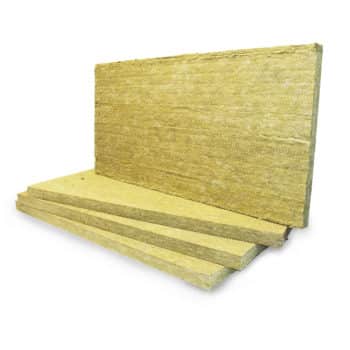
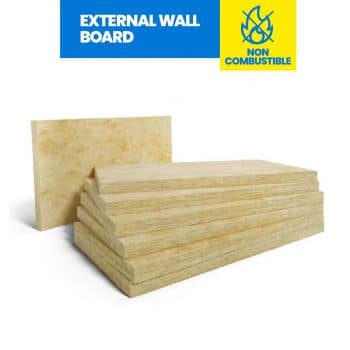
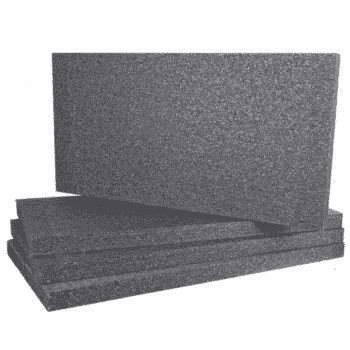

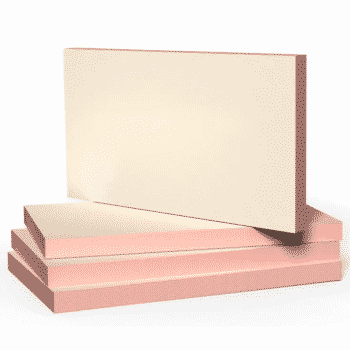
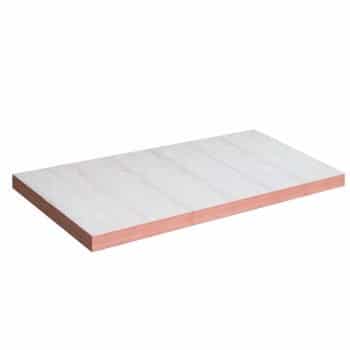
7 thoughts on “Does Insulation Work in Summer?”
We had our home insulated last winter when they filled the cavity walls. We have noticed a huge difference this summer when even on the hottest days the insulation has stopped our home getting too hot I guess by slowing movement of heat into the home.
I thought insulation would look the heat in the house like it does in the winter! A useful blog as never thought of it like that!
My house gets so hot in the summer because of solar gain and the insulation we have applied to the outside of the house then doesn’t let the house get cool again. I am looking for a solution to lower the level of solar gain – is there a film I could put on the windows? I have read growing a tree in front of the window is the easiest option but I love our view!!
Hello Kevin79,
There are many differing types of structures, so things can vary from project to project. If it’s a lightweight structure or has lots of glazing, it is easy for summertime overheating to occur. It sounds like you need add mass, which could be done with wood fibre insulation for example, as the suns energy is often greater than the performance of the building. (Like planting a tree, without losing the view).
Not sure if you are planning any more work to the house, but if so give us a call and we can advise.
Insulation definitely works in the summer. We had our loft done and it doesn’t matter what time of year it is, the rooms up there sit at a constant temperature. Definitely worth doing!
wasn’t expecting it, but my house is so much cooler in the summer since we had insulation fitted
good post